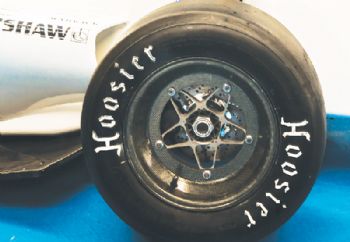
Metal additive-manufacturing technology from Renishaw (
www.renishaw.com) helped a team of students from Swinburne University of Technology in Melbourne, Australia, to achieve the university’s highest overall score in the latest Formula SAE competition.
Organised by the Australian branch of the Society of Automotive Engineers, this event sees each team of students produce a single-seat racing car that competes in a series of track tests.
The teams are also judged on the design and cost-efficiency of their car, and on a marketing presentation about their project.
In 2010, Swinburne was one of the first to enter an electric car in the competition, and it has since continued to do so.
The fundamental problem in racing an electric car against petrol competition is the weight of the batteries. This means that the weight of all the other components must be minimised to make the car competitive.
Swinburne (
www.swinburne.edu.au) is one of only a few teams to base its car on a carbon fibre chassis; however, the team found that the rotational inertia of the wheels during acceleration and braking was using much more energy than they could afford.
Tasked with reducing the weight of the wheels, Ryan Wise — the Dynamics Section Leader for Team Swinburne — followed up on the suggestion of considering additive manufacturing.
He visited Renishaw’s office in Australia with a wheel from an earlier car; this had a wheel centre machined from an aluminium alloy, plus a rim also made from aluminium.
The decision was taken to replace the wheel centre with a smaller one made from titanium alloy (using additive manufacturing) and to replace the rim with one made from carbon fibre.
Mr Wise said: “One of the things that I loved about using the Renishaw additive-manufacturing equipment was the ability to increase the complexity of my design.
“With parts that I had designed for traditional manufacturing methods, I had to be very aware of the size and shape of the cutting tools that were available, as well as the machining time that would be required to achieve certain design features.
“By 3-D printing the wheel centres, I was able to add fine features that would be difficult to achieve using traditional methods — and it cost nothing in extra build time.
“A big advantage of using Renishaw’s additive-manufacturing technology was the ability to use titanium.
“The amount of material for the initial billet, together with the machining time and experience that would be needed, had ruled out using titanium with traditional manufacturing methods.
“The new design reduced the weight of each wheel by 20%, resulting in a 75% reduction in rotational inertia, which gave measurable improvements in acceleration and braking performance.
“Printing the parts required very little effort on our behalf, and they were manufactured much more quickly than the last set of wheel centres that we made.
“I was surprised by the quality of the surface finish and by the fact that no finish-machining was required.”